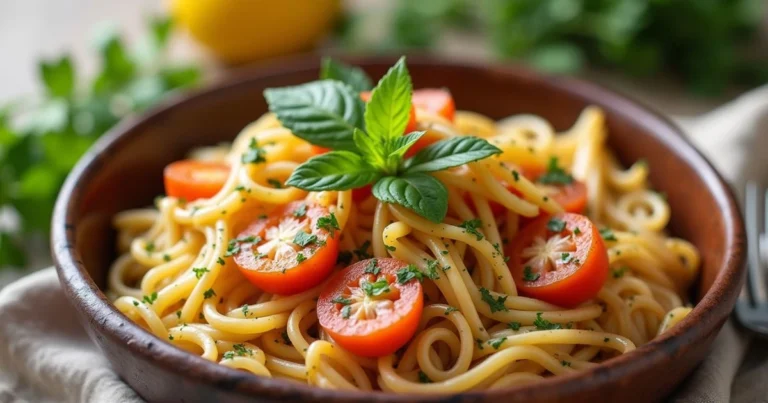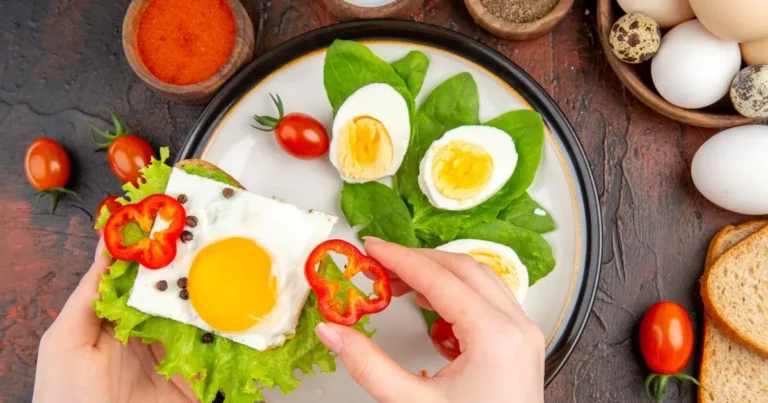Healthy Cookie Dough Recipe: 10 Guilt-Free Ways to Satisfy Your Sweet Tooth (No Baking Required!)
Remember sneaking spoonfuls of cookie dough when nobody was watching? That moment of pure indulgence—sweet, rich, studded with chocolate chips—felt like a guilty secret. Then came the warnings about raw eggs and the nagging voice in your head counting calories and worrying about food safety.
For years, I believed cookie dough had to remain a rare, anxiety-inducing treat. A quick taste while baking cookies, immediately followed by guilt about the butter, sugar, and potential salmonella exposure. The pleasure never felt quite worth the worry.
Everything changed when I discovered that a healthy cookie dough recipe doesn’t mean sacrificing taste or texture. It means reimagining what’s possible—creating something safe to eat by the spoonful, packed with nutrients instead of empty calories, and so satisfying that you won’t even miss the traditional version.
The first time I blended chickpeas into cookie dough, I thought I’d lost my mind. But that initial spoonful proved me wrong. Creamy, sweet, genuinely delicious—and I could eat it without a shred of guilt or concern. No stomachache. No sugar crash. Just pure enjoyment combined with actual nourishment.
Whether you’re craving something sweet at midnight, seeking a protein-packed snack between meals, or wanting to give your kids a treat you feel good about, these recipes will transform how you think about satisfying your sweet tooth.
Table of Contents
Why a Healthy Cookie Dough Recipe Changes Everything
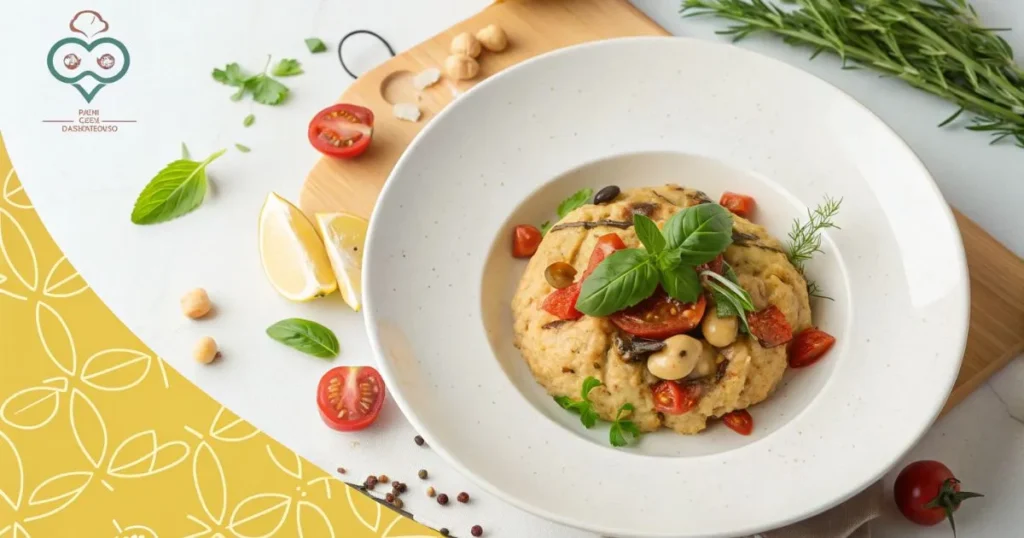
The Dark Side of Traditional Cookie Dough
Traditional cookie dough comes with real risks that go beyond just calories. The Centers for Disease Control warns that raw flour can harbor E. coli bacteria, even in unopened packages. Raw eggs carry salmonella risk, particularly concerning for pregnant women, young children, and anyone with a compromised immune system.
Beyond safety concerns, conventional cookie dough delivers empty calories with minimal nutritional benefit. A typical tablespoon contains 150-200 calories from refined sugar and butter—ingredients that spike your blood sugar rapidly, then send it crashing down, leaving you craving more sweets within an hour.
The psychological impact matters too. Traditional cookie dough feels like “cheating” on your health goals. That guilt undermines your relationship with food, creating cycles of restriction and bingeing that serve nobody well.
How Healthy Versions Break the Pattern
A well-crafted healthy cookie dough recipe eliminates every single one of these concerns. No raw eggs means no salmonella risk. No raw flour means no bacterial contamination. These versions are genuinely safe for everyone—pregnant women can indulge, kids can help make it and eat it, and immunocompromised individuals don’t need to worry.
The nutritional profile flips completely. Instead of empty calories, you’re getting protein that keeps you satisfied for hours. Fiber slows digestion and stabilizes blood sugar. Healthy fats from nuts or seeds support hormone production and help your body absorb vitamins. Natural sweeteners provide sweetness without the dramatic blood sugar roller coaster.
Perhaps most importantly, these recipes free you psychologically. You can eat cookie dough straight from the bowl without guilt, anxiety, or regret. That shift in your mental relationship with treats matters more than you might realize—it’s the difference between sustainable healthy eating and constant deprivation followed by binge cycles.
Essential Ingredients That Make It Work
Protein-Rich Bases Create Perfect Texture
The foundation of any successful healthy cookie dough recipe starts with choosing the right base ingredient. Chickpeas might sound bizarre in dessert, but when drained, rinsed, and blended smooth, they create a neutral, creamy texture that takes on whatever flavors you add. One cup provides fifteen grams of protein and an impressive thirty-five percent of your daily fiber needs.
Nut butters offer another excellent foundation. Natural almond or peanut butter delivers richness, binding power, and authentic cookie dough texture. Two tablespoons contain seven to eight grams of protein plus healthy monounsaturated fats that keep you satisfied. The natural sweetness means you’ll need less added sugar to achieve the taste you’re after.
Greek yogurt works beautifully when you want something lighter. A six-ounce serving packs seventeen grams of protein plus probiotics that support gut health. The slight tanginess actually enhances other flavors rather than competing with them. For the lowest-calorie option that still delivers serious protein, Greek yogurt-based recipes can’t be beaten.
Natural Sweeteners That Won’t Wreck Your Blood Sugar
The sweetener you choose dramatically affects both taste and how you feel after eating. Maple syrup and honey offer mineral content that refined white sugar lacks, though they still impact blood sugar with glycemic indexes around fifty-four and fifty-eight respectively. Use them in moderation—typically a quarter cup per recipe.
Medjool dates bring serious advantages when blended into cookie dough. Their glycemic index of forty-two is lower than most sweeteners, and they contribute fiber that further slows sugar absorption. The caramel-like flavor works particularly well in oatmeal or chocolate-based recipes. Soak them briefly in warm water before blending for the smoothest texture.
For zero-calorie options, monk fruit sweetener provides intense sweetness without any blood sugar impact. It doesn’t have the bitter aftertaste that bothers some people about stevia. You’ll need much less than regular sugar—start with half the amount called for and adjust to taste.
Chocolate That Adds Value
Not all chocolate chips are created equal when making a healthy cookie dough recipe. Cacao nibs deliver the most nutritional punch—they’re pure chocolate with powerful antioxidants and zero added sugar. Toast them briefly in a dry pan to reduce bitterness and bring out complex chocolate flavor.
Dark chocolate chips with seventy percent cacao or higher provide antioxidants with minimal sugar. Mini chips distribute throughout the dough better, ensuring you get chocolate in every bite rather than large chunks in some spoonfuls and none in others.
Sugar-free chocolate chips sweetened with stevia or erythritol work for those strictly avoiding sugar. They allow you to enjoy chocolate flavor without any glycemic impact, though the texture can be slightly different from traditional chips.
Three Game-Changing Recipes to Start With
Classic Chocolate Chip: The Gateway Recipe
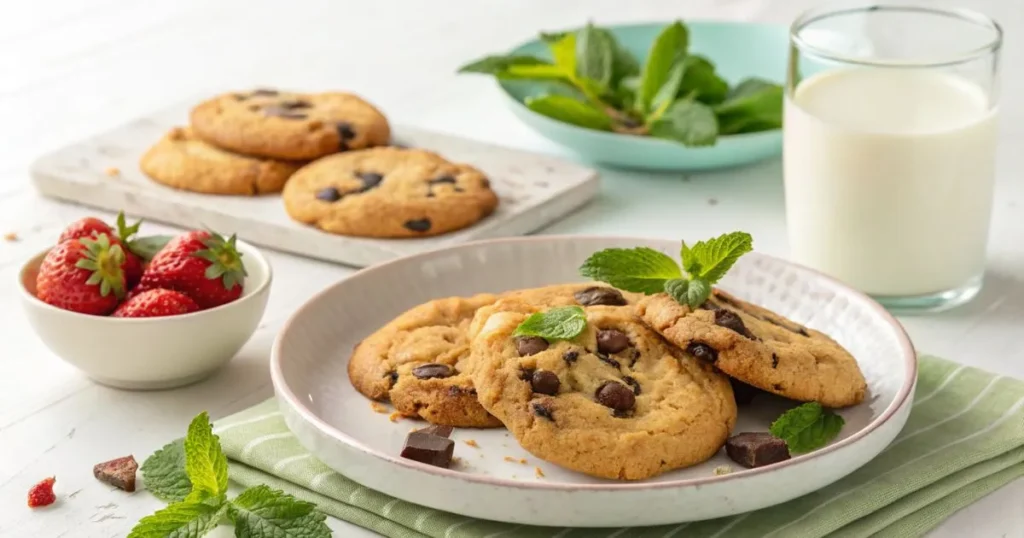
This healthy cookie dough recipe converts even the most skeptical eaters. The chickpeas completely disappear into a texture remarkably close to traditional cookie dough, while providing protein and fiber that genuinely satisfy hunger rather than just temporarily filling your stomach.
What you’ll need:
| Ingredient | Amount | Purpose |
|---|---|---|
| Chickpeas (canned) | 15 oz can | Rinsed well and patted dry |
| Natural peanut butter | 1/2 cup | Creamy, no added sugar |
| Pure maple syrup | 1/4 cup | Natural sweetener |
| Vanilla extract | 2 tsp | Flavor depth |
| Sea salt | 1/4 tsp | Balances sweetness |
| Oat flour | 2 tbsp | Thickness and texture |
| Mini dark chocolate chips | 1/4 cup | 70% cacao or higher |
| Almond milk | 2-3 tbsp | Adjust consistency |
How to make it:
Start by thoroughly rinsing your chickpeas under cold water. This removes the canned taste and excess sodium. Pat them completely dry with paper towels—this step matters more than you’d think for achieving the right texture.
Add chickpeas, peanut butter, maple syrup, vanilla, and salt to your food processor. Process for two to three full minutes, stopping to scrape down the sides. Don’t rush this—the mixture needs to become completely smooth, with no visible chickpea chunks remaining.
Add the oat flour and pulse until just incorporated. If your mixture seems too thick to scoop easily, add almond milk one tablespoon at a time until you reach cookie dough consistency. Transfer to a bowl and fold in those chocolate chips by hand.
Refrigerate for at least thirty minutes before eating. This firming step makes the texture more authentic and allows flavors to fully develop.
The numbers: Each two-tablespoon serving delivers approximately 145 calories, five grams of protein, three grams of fiber, and eight grams of natural sugar. Compare that to traditional cookie dough’s 200 calories with minimal protein or fiber, and you’ll understand why this version actually satisfies rather than triggering more cravings.
Peanut Butter Protein Power
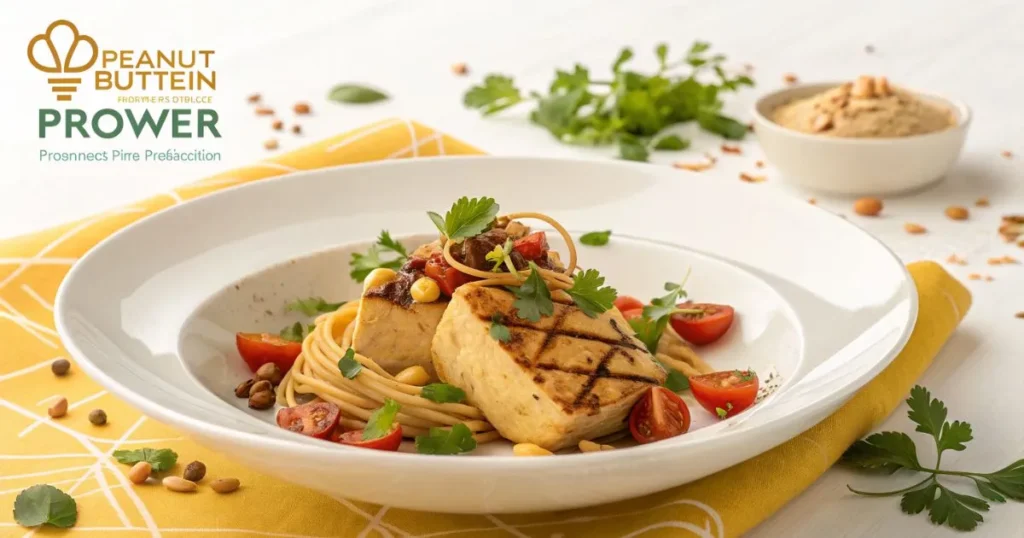
When you need serious fuel—before a workout, after training, or just as a high-protein snack—this healthy cookie dough recipe delivers ten grams of protein per serving. The combination of nut butter and protein powder provides both immediate and sustained energy.
Your ingredient list:
| Item | Quantity | Function |
|---|---|---|
| Natural peanut butter | 1 cup | Base and protein source |
| Vanilla protein powder | 1/2 cup | Adds 15-20g protein |
| Raw honey | 3 tbsp | Binding and sweetness |
| Pure vanilla extract | 1 tsp | Essential flavor |
| Coconut flour | 2-3 tbsp | Texture adjustment |
| Sea salt | 1/4 tsp | Flavor enhancer |
| Mini chocolate chips | 3 tbsp | Satisfaction factor |
Making it happen:
Stir together peanut butter and honey until uniformly combined. The mixture will be thick and sticky. Add your protein powder and mix thoroughly—this takes some arm strength since it gets quite dense.
Stir in vanilla and salt, then gradually add coconut flour. Coconut flour absorbs moisture aggressively, so add it one tablespoon at a time until the dough reaches a moldable but not crumbly consistency. Different protein powders absorb liquid differently, so you might need anywhere from two to four tablespoons.
If your dough becomes too thick to work with, add almond milk a teaspoon at a time. Once you achieve the right texture, fold in chocolate chips. Roll into balls for grab-and-go portions, or press into a container for scooping.
Nutritional breakdown per serving (makes ten): 165 calories, 10 grams protein, 12 grams carbs, 9 grams healthy fat, and 2 grams fiber. This balance makes it ideal about thirty to sixty minutes before exercise, or within thirty minutes after training when your muscles are primed to absorb nutrients.
Mint Chocolate Chip Magic
This healthy cookie dough recipe tastes like expensive ice cream but delivers actual nutrition. The fresh mint flavor combined with chocolate creates something that feels indulgent while supporting your health goals rather than undermining them.
What goes in:
| Ingredient | Measurement | Notes |
|---|---|---|
| Chickpeas (canned) | 15 oz can | Drained, rinsed, dried |
| Almond butter | 1/2 cup | Creamy works best |
| Maple syrup | 1/4 cup | Pure grade A |
| Peppermint extract | 1/2-3/4 tsp | Start small, adjust |
| Vanilla extract | 1 tsp | Balances mint |
| Sea salt | 1/4 tsp | Don’t skip |
| Mini dark chocolate chips | 1/4 cup | For distribution |
| Fresh spinach (optional) | Small handful | Natural green color |
The process:
Blend chickpeas in your food processor until completely smooth—this takes longer than you expect, usually three to four minutes. Scrape down the sides frequently to ensure no chunks remain.
Add almond butter, maple syrup, vanilla, salt, and just half a teaspoon of peppermint extract. Blend until creamy and uniform. Peppermint extract is powerful—you can always add more, but you can’t remove it if you overdo it initially.
If you want that classic mint-chip green color without artificial dyes, add a handful of fresh spinach and blend thoroughly. This adds nutrients and color without affecting taste—your taste buds won’t detect any vegetable flavor at all.
Transfer to a bowl, fold in chocolate chips, and taste. Adjust peppermint if needed, adding just a few drops at a time until you hit your sweet spot. Some people love intense mint flavor while others prefer subtle—customize to your preference.
Making Your Healthy Cookie Dough Recipe Perfect

Fixing Texture Problems
Your first batch might not turn out exactly as planned. Too thick? Add liquid one tablespoon at a time—almond milk, regular milk, or even water works. Different brands of nut butter contain varying amounts of oil, which affects consistency.
Too runny? Add more flour gradually. Almond flour, oat flour, or coconut flour all work, though coconut flour absorbs the most moisture. Add just one tablespoon at a time, mixing thoroughly before deciding if you need more.
Grainy texture usually means you didn’t blend long enough. Chickpea-based recipes especially need several minutes of processing to achieve smoothness. A high-powered blender or food processor makes this easier—if you’re using a standard blender, you might need to blend in smaller batches.
Storage That Maintains Quality
Store your healthy cookie dough recipe creation in an airtight container in the refrigerator. It stays fresh for five to seven days, though texture and flavor peak within the first three to four days. Press plastic wrap directly onto the surface before sealing to prevent the top layer from drying out.
For longer storage, freezing works beautifully. Scoop dough into balls, freeze them on a parchment-lined tray until solid, then transfer to a freezer bag. They’ll keep for three months and you can grab individual portions whenever cravings strike.
Some recipes taste incredible eaten frozen, creating an experience similar to ice cream. The mint chocolate chip version is particularly good this way. Others are better thawed slightly—experiment to find your preference.
The Science Behind Why This Actually Works
Protein Prevents Cravings
When you eat a healthy cookie dough recipe with substantial protein content, your body releases satiety hormones that signal fullness to your brain. Protein slows stomach emptying, providing sustained energy rather than the quick spike and crash of pure sugar.
Research consistently shows that protein increases feelings of fullness more effectively than carbohydrates or fat alone. Aiming for five to ten grams of protein per serving creates genuine satisfaction that lasts hours rather than minutes.
Fiber Stabilizes Everything
The fiber in chickpeas, oats, and other whole food ingredients fundamentally changes how your body processes sweetness. Fiber slows sugar absorption into your bloodstream, preventing the dramatic spikes that trigger insulin release and subsequent crashes that make you crave more sugar.
That same fiber feeds beneficial bacteria in your gut, supporting everything from immune function to mood regulation. Three to five grams of fiber per serving of cookie dough might not sound like much, but it’s significantly more than traditional versions provide, and it makes a measurable difference in how satisfied you feel.
Healthy Fats Create Lasting Satisfaction
The monounsaturated fats in nut butters slow digestion further, extending that feeling of satisfaction. They also help your body absorb fat-soluble vitamins and support the production of hormones that regulate appetite and metabolism.
Six to ten grams of healthy fat per serving hits the sweet spot—enough to provide satiety and richness without excessive calories. This balance explains why a healthy cookie dough recipe can satisfy your sweet tooth with a smaller portion than traditional versions require.
Your New Relationship With Sweet Treats
The revolution of healthy cookie dough recipes means you no longer face a false choice between satisfying cravings and honoring your body. These recipes prove that nutritious and delicious aren’t opposing forces—they’re partners in creating a sustainable approach to eating that you can maintain for life.
You deserve treats that nourish rather than deplete you. You deserve to satisfy sweet cravings without anxiety about food safety or guilt about nutritional emptiness. Most importantly, you deserve to enjoy food without constantly negotiating with yourself about whether you’re “allowed” to have something.
Start with the classic chocolate chip version if this world is new to you. Let that first spoonful dissolve your skepticism. Then explore other variations—maybe the protein-packed peanut butter version becomes your post-workout ritual, or perhaps mint chocolate chip satisfies ice cream cravings without dairy or excessive sugar.
Having multiple healthy cookie dough recipe options means you can match your choice to your specific needs at any moment. Feeling depleted? Make the high-protein version. Restricting carbs? Try an almond flour base with keto-friendly sweeteners. Feeding children? The chickpea version wins them over without them ever knowing it contains beans.
These aren’t just healthier alternatives—they’re invitations to reimagine what dessert can be. Nourishing your body. Satisfying your cravings. Supporting your goals. And tasting absolutely incredible in the process.
Here’s your challenge: Pick one healthy cookie dough recipe from this guide and make it within the next three days. Give yourself full permission to enjoy every single bite without guilt or second-guessing. Notice how you feel an hour later, then three hours later. That difference—sustained energy instead of a crash, satisfaction instead of renewed cravings—is what happens when you nourish your body instead of just temporarily filling it. Once you experience that shift, everything changes.
Did You Try Our Recipe ?
There are no reviews yet. Be the first one to write one.


